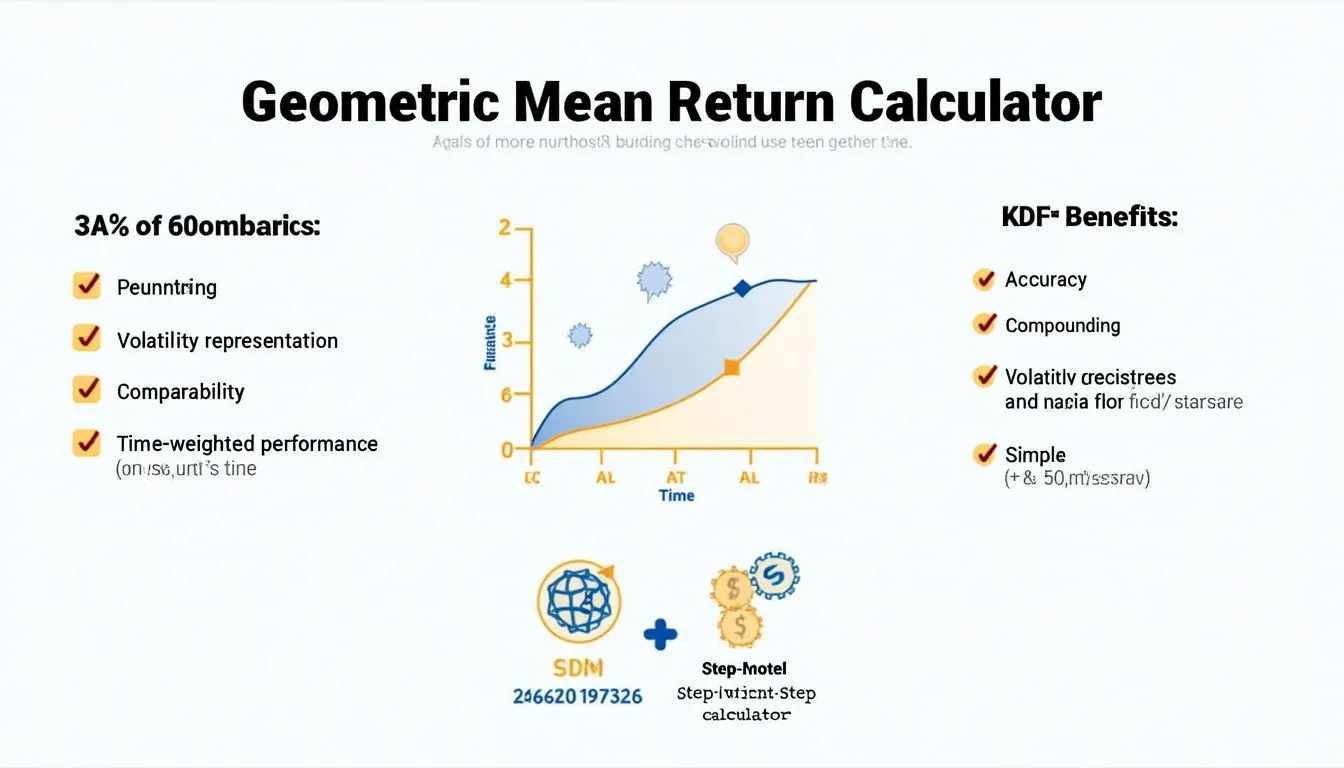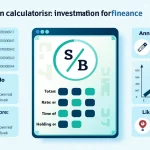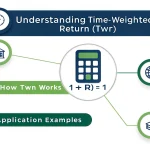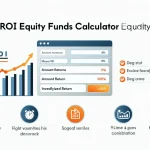Geometric Mean Return Calculator
Is this tool helpful?
How to use the tool
- Type your returns in decimals, separated by commas. Example 1: 0.12, -0.05, 0.03. Example 2: 0.08, 0, 0.07, -0.02.
- Press “Calculate.” The script multiplies each (1 + r), takes the n-th root, then subtracts 1.
- Read the result as a percentage; it represents your average compound growth per period.
Formula used
$$GMR = \left(\prod_{i=1}^{n}(1+r_i)\right)^{1/n} – 1$$
Worked examples
- Example 1: 0.12, -0.05, 0.03 → Product = 1.12 × 0.95 × 1.03 = 1.09592. Cube root = 1.0311. GMR = 3.11 %.
- Example 2: 0.08, 0, 0.07, -0.02 → Product = 1.132488. Fourth root = 1.0316. GMR = 3.16 %.
Quick-Facts
- Geometric mean never exceeds arithmetic mean for unequal returns (CFA Institute, 2020).
- “CAGR is simply a geometric mean over time” (Investopedia, https://www.investopedia.com/terms/c/cagr.asp).
- If any period is -100 %, the product becomes zero and GMR = -100 % (Morningstar, 2022).
- Accepts daily, monthly, or annual data because the root adjusts for period length (CFA Curriculum, 2023).
FAQ
What is the geometric mean return?
Geometric mean return is the nth-root of the compounded growth factors minus 1, giving the exact average rate earned per period (CFA Institute, 2020).
Why is it better than the arithmetic mean?
Arithmetic mean ignores compounding, so it overstates performance when returns vary. Geometric mean captures volatility effects, one reason CFA texts call it “the only correct average for multi-period returns” (CFA Curriculum, 2023).
Can the result be negative?
Yes. When the compounded product is below 1, the root also falls below 1, yielding a negative percentage that signals a net loss (Morningstar Guide, 2022).
Does mixing daily and monthly data distort the output?
Mixing frequencies distorts results because each root assumes equal-length periods. Convert all returns to the same interval first (Vanguard Research, 2021).
What happens if one period is -100 %?
The product becomes zero, so the geometric mean is -100 %; recovery is impossible because the investment value hit zero (Investopedia, https://www.investopedia.com/articles/08/arithmetic-geometric-mean.asp).
Is geometric mean the same as CAGR?
CAGR is the geometric mean of a single investment’s total growth over several periods, so both metrics equal each other when cash flows are absent (Investopedia, link above).
How many periods produce a reliable estimate?
Studies suggest at least five periods reduce random error for volatile assets (Dimson et al., 2022).
Does the tool adjust for cash flows?
No. Geometric mean is time-weighted and ignores external cash flows; use money-weighted return (IRR) if deposits or withdrawals occur (GIPS Standards, 2020).
Important Disclaimer
The calculations, results, and content provided by our tools are not guaranteed to be accurate, complete, or reliable. Users are responsible for verifying and interpreting the results. Our content and tools may contain errors, biases, or inconsistencies. Do not enter personal data, sensitive information, or personally identifiable information in our web forms or tools. Such data entry violates our terms of service and may result in unauthorized disclosure to third parties. We reserve the right to save inputs and outputs from our tools for the purposes of error debugging, bias identification, and performance improvement. External companies providing AI models used in our tools may also save and process data in accordance with their own policies. By using our tools, you consent to this data collection and processing. We reserve the right to limit the usage of our tools based on current usability factors.







